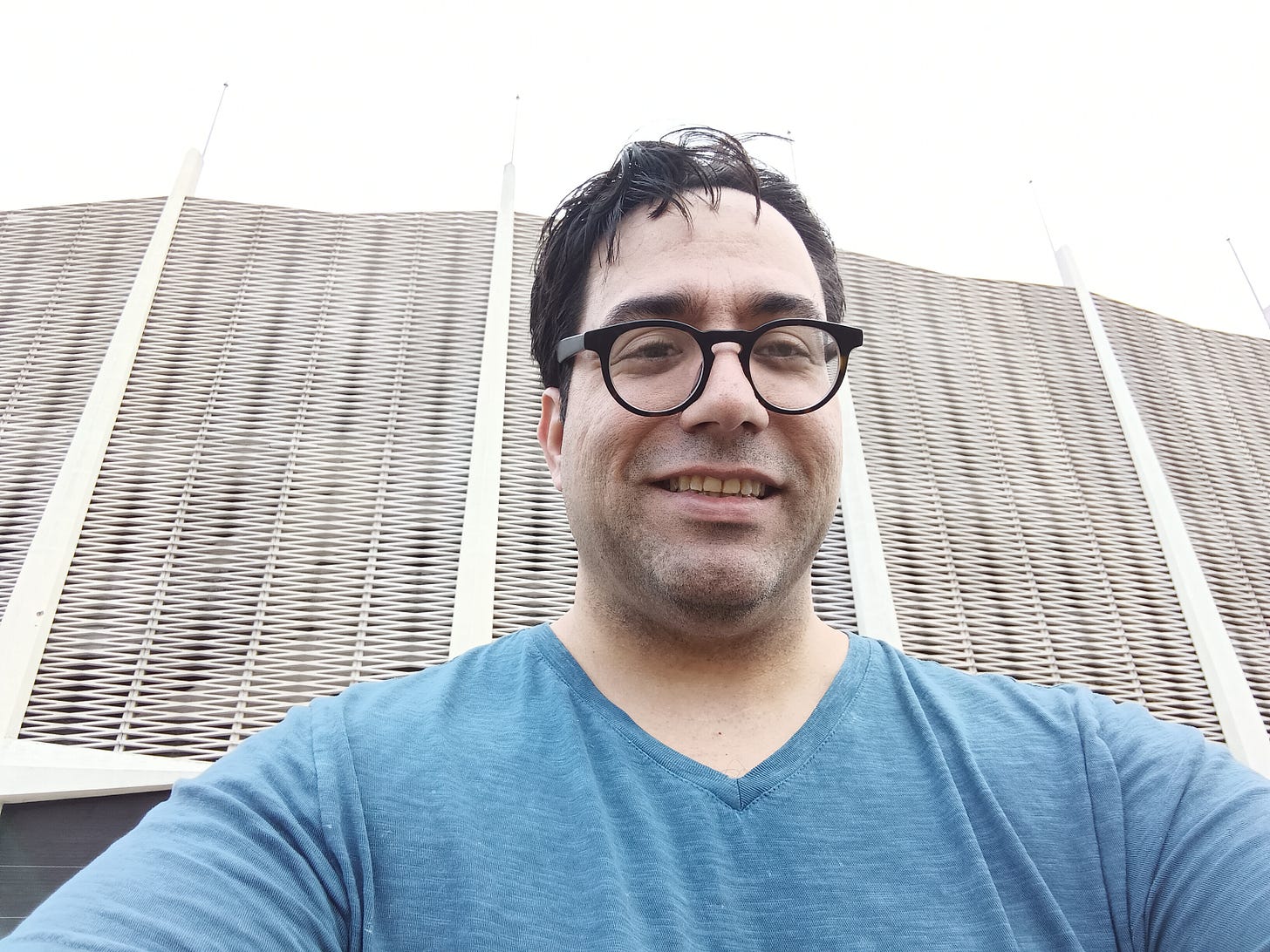The Eighth Wonder
The Astrodome has seen better days. But even in its shabby state, there’s something special about the building.
I recently traveled to Houston and needed to visit the Astrodome.
My initial goal was to slip inside the dormant building, which the Astros departed after the 1999 season. I envisioned myself in secret-agent mode — avoiding detection, finding an open door, and sneaking my way through the place to find secrets and clues.
But upon arrival, I realized that wouldn't be possible. Too many people milling around. The setup for the Houston Rodeo was underway outside, and people were laying down wires and moving propane tanks and testing the ski lift and setting up carnival games, and they would definitely notice some guy trying to slither past.
I settled for taking pictures outside of the building.
The Eighth Wonder of the World has seen better days. Paint-chipped surfaces are covered in grime. The façade is blanched and faded. Ramps are missing. Railings are busted and rusted.
But even in its shabby state, there’s something special about the building.
This was the site of Ali fights and Judy Garland shows and the Battle of the Sexes. The building that inspired Astroturf and revolutionized indoor sports. A place where Earl Campbell rumbled and Nolan Ryan hurled and players like Ken Caminiti sacrificed their backs and knees and shoulders.
The dome, despite its lofty history, stands slight and unassuming beside the newer but dispassionate NRG Stadium, home of the NFL's Texans. But the outer height is a bit misleading. The Astrodome was built into a giant hole, and the playing surface rested about 30 feet underground — meaning you could fit an 18-story building inside the structure.
A sporting event hasn’t been held inside the Astrodome for more than a decade. But it would be great to see the building preserved and restored. It would be a shame to see so much history erased.
Those stakes — and the ease at which history can be lost — was reinforced to me after I was done walking around the Astrodome and dodging construction vehicles, and I took an Uber to my destination. When I got in the car, I mentioned to the driver how the Astros played there.
"No, they play downtown," he said.
"The Astros play downtown now. Before that, they played in the Astrodome," I said. "They played in the Astrodome for a long, long time." Thirty-five seasons, in fact.
I checked out Enron Field Minute Maid Park during my trip, too. It was exciting to get a peek inside at the playing surface. And to check out the statues of Craig Biggio and Jeff Bagwell, two of the most meaningful players in Astros history, in a courtyard outside. So many ballparks have static, emotionless statues, but these statues pair with each other and show Biggio at second base throwing the ball to a stretching Bagwell.
Walking around the statues gives you the feeling that, for a moment, you've frozen time and are viewing the players from all angles as they make the play. Which is the coolest thing.
Now that the Astros have broken through over the past half-decade and won the World Series, it's easy to lose sight of all of the tough years — the missed opportunities, the what-ifs, the burden of failure.
It's become too easy to overlook the Astrodome years.
But the Astrodome is worth keeping. The site is a lot more meaningful as the Astrodome than it would be as another parking lot or, heaven forbid, back to being a hole in the ground.






Great read, Dan! It is truly sad what's happened with the Astrodome. Even as a Texan it is something I never got to experience sadly but would love to see it restored even if not for a team for special functions. As a Yankee fan (in Texas, yeah I know) it hurts to know I never got to experience Old Yankee Stadium and now it's completely gone. We are such a society of the latest and greatest and we leave nothing but memories for history.